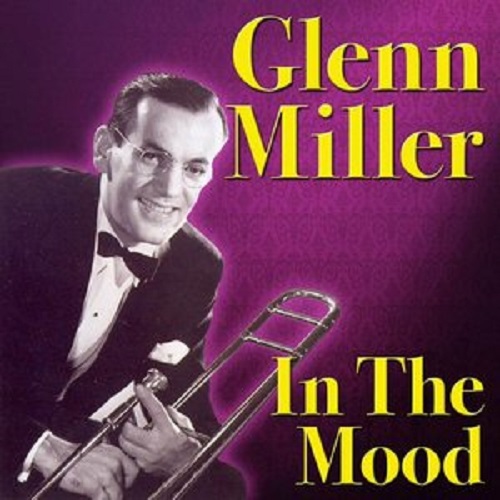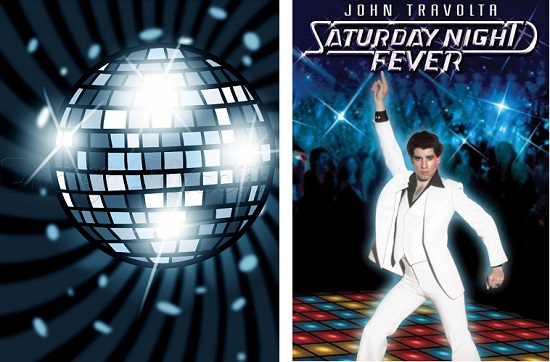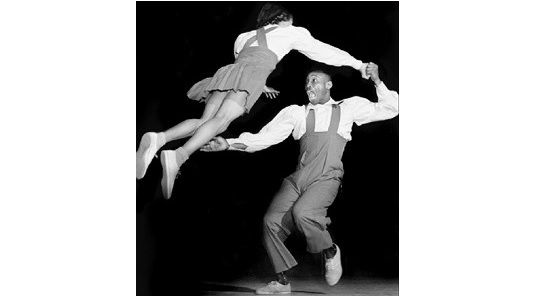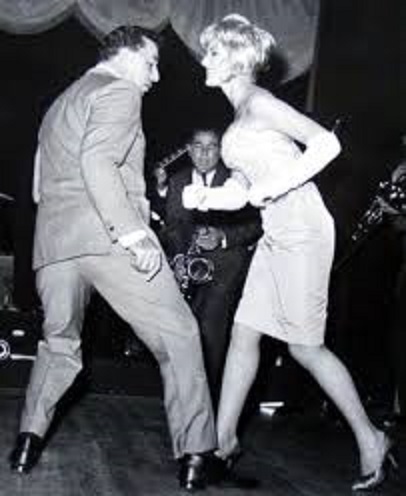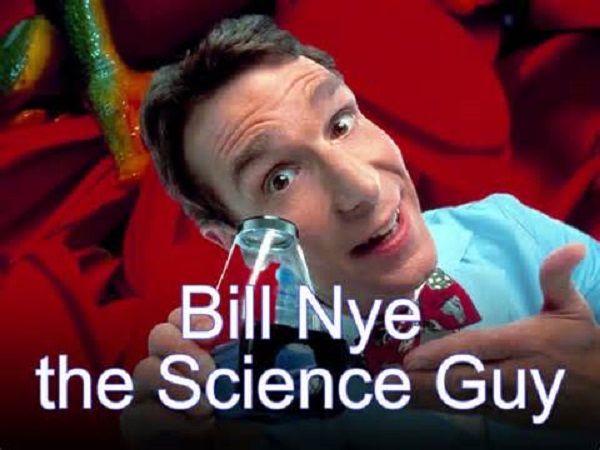The experts on musical taste formation say that our tastes are mostly formed during our 14-24 age range. For example, a 60-year-old today would relate to music popular during 1970-1980 and an 80-year-old today would relate to music from 1950-1960. Someone born after the heyday of swing (the Benny Goodman, Glen Miller, et al era), could logically say “‘In the Mood’ puts me out of the mood”. MAYBE folks who have been dancing a long time would relate to music from the time they started dancing (especially if they took a lot of lessons at that time).
Tag Archives: east coast swing
Disco Balls Survived Longer Than the Hustle Dance
Louisville, KY recently had a big party to celebrate its newest monument, an 11-foot diameter, 2,300-pound disco ball, to commemorate the city’s longtime role as the capital of American disco-ball manufacturing.
The heyday of disco-balls was during the 1970’s, when disco dancing was so popular. The signature dance at the time was the hustle, a sort of swing with several variations that takes some skill to make it look and feel good, but the music’s strong beat often also brings lots of unskilled “freestyle” folks onto the dance floor. For Wilddancer, it was difficult to learn the dance figures just by watching, because of their strangely syncopated steps in comparison to the more common and intuitive east coast swing or west coast swing dances.
Disco’s popularity was also helped by the Saturday Night Fever movie starring John Travolta (with his white suit and signature pose), with the Bee Gees’ “Staying Alive” song. And it also got a boost from the funny send-up of “Staying Alive” from the movie Airplane!
The disco feeling and faster tempo of that song are much better matches to the figures of the hustle than those of “The Hustle” that is often played today by disk jockeys unfamiliar with the dance.
Lindy Hop Dancer Frankie Manning Would Have Been 102 on May 26, 2016
Frankie Manning didn’t invent the “Lindy Hop”, but he was instrumental in making it popular. The Lindy Hop was a “street dance”, i.e., something invented by the dancers themselves, rather than more elite dancing instructors. (In that respect it shares with the sophisticated Argentine Tango, which grew out from its origins in brothels.) It was being developed at the Savoy ballroom in Harlem (a black ghetto in New York City), and got named the Lindy Hop by one of the dancers there (Georges “Shorty” Snowden) when he was asked by a journalist what its name was, who groped for an answer and found it in the headlines about Charles Lindbergh’s flight across the Atlantic. Lindy went national and became higher class (and its name was changed to Jitterbug), particularly with Benny Goodman and big band swing starting in 1936. Frankie Manning wandered by the Savoy in 1929, and soon became a passionate Lindy dancer and the ambassador for it … to the extent that he was worshipped around the world for his artistry. Frankie’s favorite song was Count Basie’s “Shiny Stockings”, which seems slow to Wilddancer for Lindy Hop, but you can see hundreds of folks doing it in a tribute video made on his 88th birthday. We at Wilddancer had been dancing for 10+ years when we saw a swing dancer do a back flip onto his hands, and back onto his feet during a “For Dancers Only” program at Stanford University on April 14, 2000 by Wynton Marsalis and the Lincoln Center Jazz Orchestra. It must have been Frankie Manning, who would have been “only 86” at the time. And he was 89 when he astonished a crowd in Sweden.
The Gresham’s Law of Social Couples Dancing Today
Gresham’s law is an economic principle that is commonly stated as: “Bad money drives out good”. But this principle has much broader applicability. For example, to social couples dancing.
Human beings have a long history of dancing in some form, be it as individuals, couples, or groups. The first couples dance Wilddancer recognizes that is still being taught and done today in most western countries is the Mazurka, which started in the 1500’s. The first Waltz (the Volta) dates back to 1556, with many variations since then. The Ländler arrived in the Austrian countryside about 1690, then moved to Vienna and a variation became the Viennese Waltz. After these came (in historical order) the couples dances Bolero, Paso Doble, Polka, Merengue, Habanara and Milonga (now Tango), Foxtrot, Rumba, Samba, Lindy Hop (later called Jitterbug), Cha Cha, Mambo, East Coast Swing, Jive, West Coast Swing, Texas Two-Step, Hustle, and Nightclub Two Step.
People who have danced for many years will tell you that the Twist killed touch dancing. If so, the “Freestyle” that people have done for the last few decades (essentially waving your butt while shifting your feet a bit) has danced on its grave. Its two main virtues are that it does not take any training and it doesn’t take much space on a dance floor (assuming that the dancers are not too drunk). But it really isn’t a guy-gal couples dance, as one sees a lot of gal-gal couples (either the guys are in short supply or have two left feet). But the net result is that the unskilled dancers are monopolizing the dance floor and displacing the skilled ones, ergo Gresham’s Law of Social Couples Dancing.
Even worse, according to an essay entitled Dancing Properly by noted British philosopher Roger Scruton, Freestyle removes the sociability of the physical contact, and perpetuates the bad manners so rampant in current times.
Top Ten Car Tunes for Social Dancing
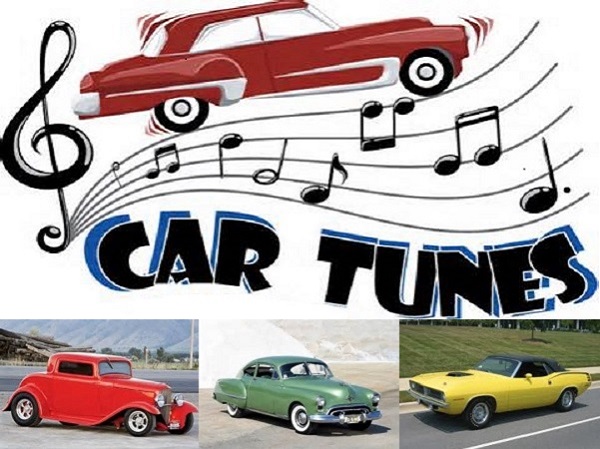 Some of the best songs written about cars are among the best ones for dancing, too. Wilddancer often gets asked by dancers (who’ve had some lessons, so they know the difference between an east coast and a west coast swing, for example) to recommend songs for bands or DJs to play for dancing. Here is our personal list, which fortunately includes seven different dance steps:
Some of the best songs written about cars are among the best ones for dancing, too. Wilddancer often gets asked by dancers (who’ve had some lessons, so they know the difference between an east coast and a west coast swing, for example) to recommend songs for bands or DJs to play for dancing. Here is our personal list, which fortunately includes seven different dance steps:
1. Cuda Janet (Plymouth Barracuda) by Wild Bill Coggshall (2014) – West Coast Swing
2. Pink Cadillac (Cadillac) by Bruce Springsteen (1984) – Hustle
3. Little GTO (Pontiac GTO) by Ronny and the Daytonas (1964) – East Coast Swing
4. One Piece at a Time (Cadillac) by Johnny Cash (1976) – Country 2-Step
5. Hot Rod Lincoln (Lincoln) by Commander Cody et al (1972) – 10-Step (this is a kind of polka that’s simple but fast; you can see it on YouTube
6. Mustang Sally (Ford Mustang) by Wilson Pickett (1966) – West Coast Swing
7. Little Deuce Coupe (1932 Ford) by Beach Boys (1963) – East Coast Swing
8. Little Red Corvette (Chevrolet Corvette) by Prince (1983) – Cha Cha
9. Jaguar and Thunderbird (Jaguar & Ford Thunderbird) by Chuck Berry – Country 2-Step
10. In My Merry Oldsmobile (Oldsmobile) by Bing Crosby – Viennese Waltz
Bill Nye, The Science Guy, … and Swing Dancer
According to the Wall Street Journal, Bill Nye’s favorite pastime is swing dancing. And he understands it as well as he understands the science that has made him a celebrity, because he knows that the women he dances with are all better dancers than he is (as noted in the Wilddancer “For Men Only” subpage). And he shares with Wilddancer a degree in mechanical engineering from Cornell University.
UCWDC Worlds Championships: Best Country Western Dancers
Wilddancer attended the annual US country western dancing championships in Nashville (“Music City”) during the week starting with New Year’s Eve, where hundreds of slender, fit people vied for top honors in eight different couples dances plus line dances and team dances. These folks were all having fun and staying in shape at the same time.
Annual Country Dance World Championships in Nashville December 30-January 5
This is a must for enthusiastic dancers to country western music–including polka, triple two-step, nightclub two-step, cha cha, waltz, (cowboy) two-step, east coast swing, and west coast swing—the eight dances whose competition is sanctioned by the UCWDC (United Country Western Dance Council). Held at the Gaylord Opryland Resort and Convention Center, it includes not only competitions and workshops, but also social dancing, shows, shopping, parties, and more. Check it out at UCWDC Worlds. See you there!
Senior Olympics Winner Trains by Dancing
One of the good things about getting older is that your preparation for athletic competition can be more fun. According to The Wall Street Journal the nearly-99-year-old Jim Kales skipped doing most of the track and field events he specialized in, opting instead to dance three to five nights a week (three hours each session), play tennis six days a week, and bowl occasionally. His dancing expertise includes swing, cha cha, salsa, rumba, bolero, tango, foxtrot, quickstep, waltz, and Texas two-step. This year he won two gold medals, three silver medals, and a bronze medal.
Annual South Bay Dance Fling in San Jose August 29-September 2
This long-running event includes tons of workshops and competitions, as well as social dancing and a great dinner show that has been an annual must for Wilddancer for the last few years. It covers a wide range of country western music–including polka, triple two-step, nightclub two-step, cha cha, waltz, (cowboy) two-step, east coast swing, and west coast swing—the eight dances whose competition is sanctioned by the UCWDC (United Country Western Dance Council). It is one of a bevy of regional events that lead up to a national championship meet in Nashville at year-end. Its activities are also licensed through the National FastDance Association. Owned and managed by Glenn, Sue & Candace Cravalho, who hold a lot of competitive championships, it can be reached at www.southbaydancefling.com.

